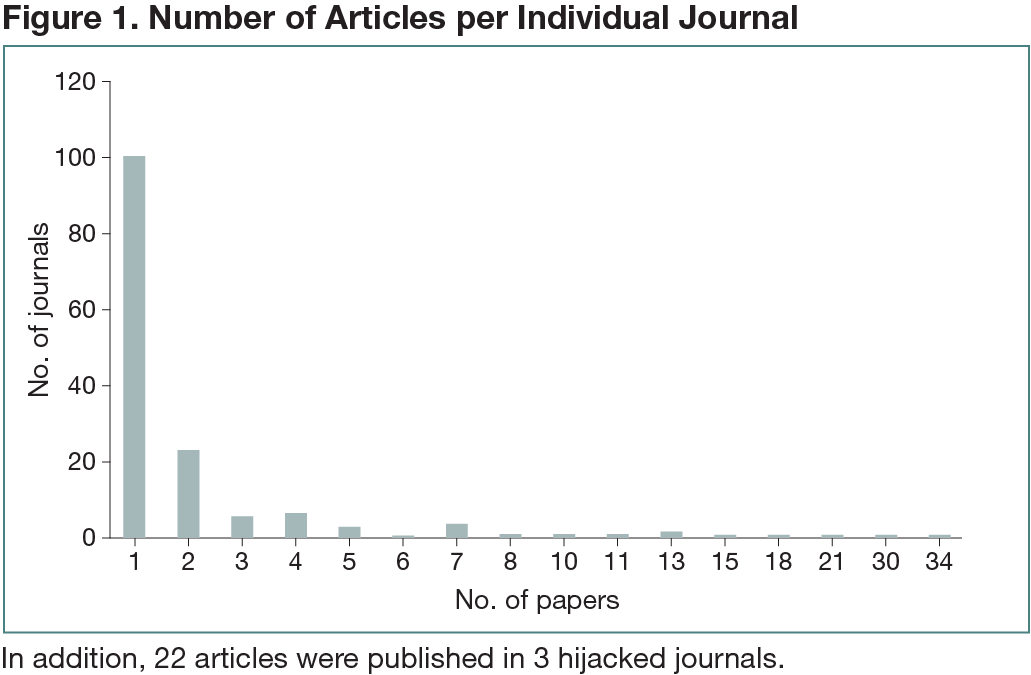Abstract
Publication and Collaboration Anomalies in Academic Papers Originating From a Russian-Based Paper Mill
Anna Abalkina1
Objective
Paper mills represent an offer for on-demand writing of fraudulent academic manuscripts for a fee. There is evidence of increasing infiltration of the academic literature with fraudulent papers originating from paper mills. The majority of known paper mills originate from China and less is known about their operations in other countries, namely Iran and Russia, where paper mills also operate.1 This study attempted to shed light on the activity of paper mills using the experience of a Russian mill to detect papers originating from the Russian-based paper mill International Publisher LLC and to identify a set of factors associated with fraudulent papers.
Design
Offers published during 2019-2021 were collected from the 123mi.ru website. The details of the offer as the title/topic of the paper, number of coauthors, country/region of a journal, date of publication, and in some cases country of the author and abstract were analyzed to identify auctioned papers. Many fraudulent papers were detected because they were published with identical or closely worded titles. The correctness of detection was confirmed by matches of other offer details.
Results
A total of 1009 offers were published during the study period, and the study identified at least 436 papers (43%) published in 154 journals potentially linked to the paper mill as of mid-March 2022; 22 of the papers appeared in 3 hijacked journals. More than 800 scholars from at least 39 countries purchased coauthorships from this paper mill. Fraudulent papers were published in predatory journals, journals of reputable publishers, and hijacked journals that represent cybercriminal publishers who clone titles and other metadata of legitimate journals (Figure 1). The list of identified papers can be accessed via a shared spreadsheet.2 This study found collaboration anomalies in questionable papers in which authors did not have common research interests, specialized in different disciplines, or were affiliated with different universities that did not focus research on the paper’s subject or might not specialize in the topic of the paper. There was also evidence of data fabrication in these papers. The study detected dishonest collaboration with journals (purchase of an entire issue) or editors who were listed as coauthors of fraudulent papers. This paper mill also applied a “one paper–one journal” principle, ie, submission of a problematic paper to an individual legitimate journal only once.
Conclusions
The production of this paper mill was difficult to detect due to individually tailored papers being submitted to 154 journals. Journals themselves had no opportunity to notice irregularities from 1 paper. Detection of irregularities can require regular upgrades of the system of detection of fraudulent papers by publishers and COPE (Committee on Publication Ethics), which is based on tracing similarity patterns among manuscripts. Because the study analyzed a single paper mill, it is likely that the number of papers with forged authorship is much higher.
References
1. Else H, Van Noorden R. The fight against fake-paper factories that churn out sham science. Nature. 2021;591:516-519. doi:10.1038/d41586-021-00733-5
2. Abalkina A. Paper mill “International Publisher.”
https://docs.google.com/spreadsheets/d/1vzjtRPX7kd2Kczdt KONEpRZb2F-4lj5Sd9jL6DfbiBk/edit?usp=sharing
1Freie Universität Berlin, Berlin, Germany, anna.abalkina@fu-berlin.de
Conflict of Interest Disclosures
None reported.

